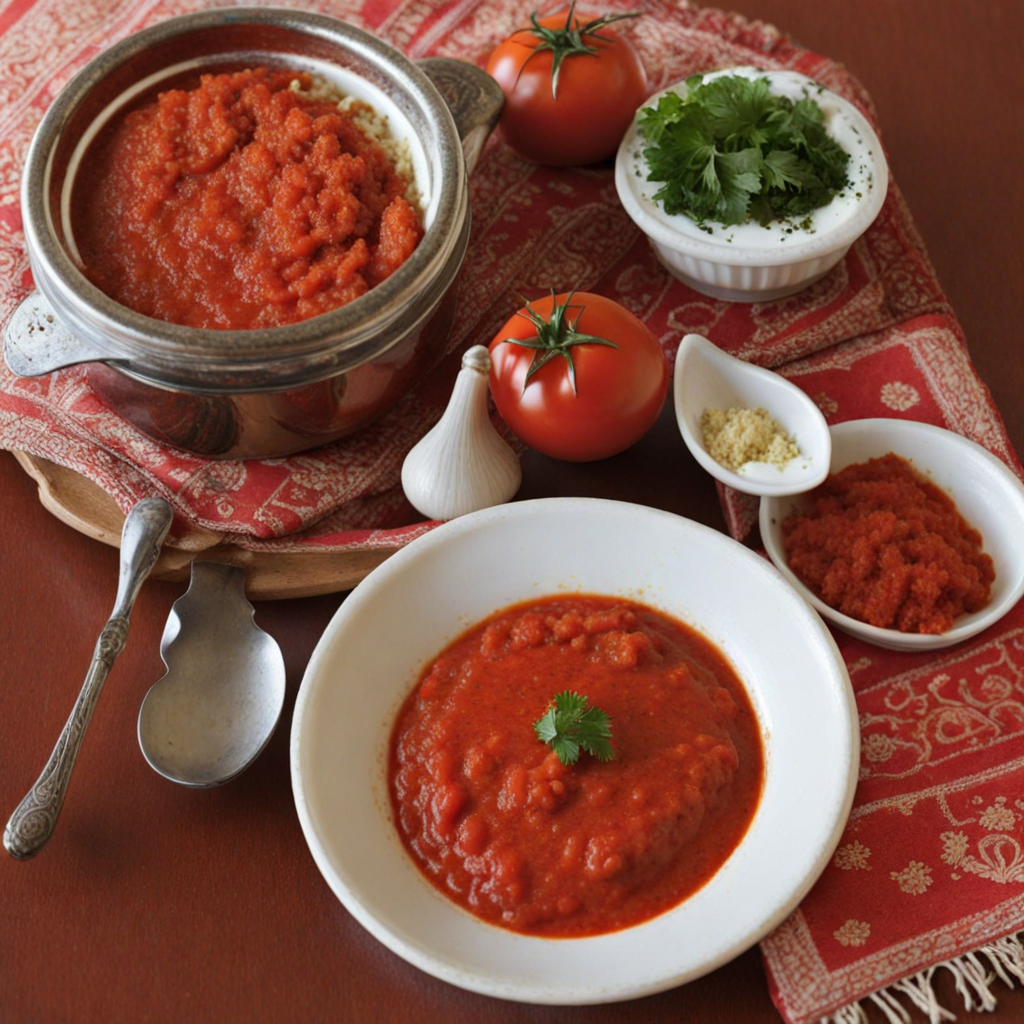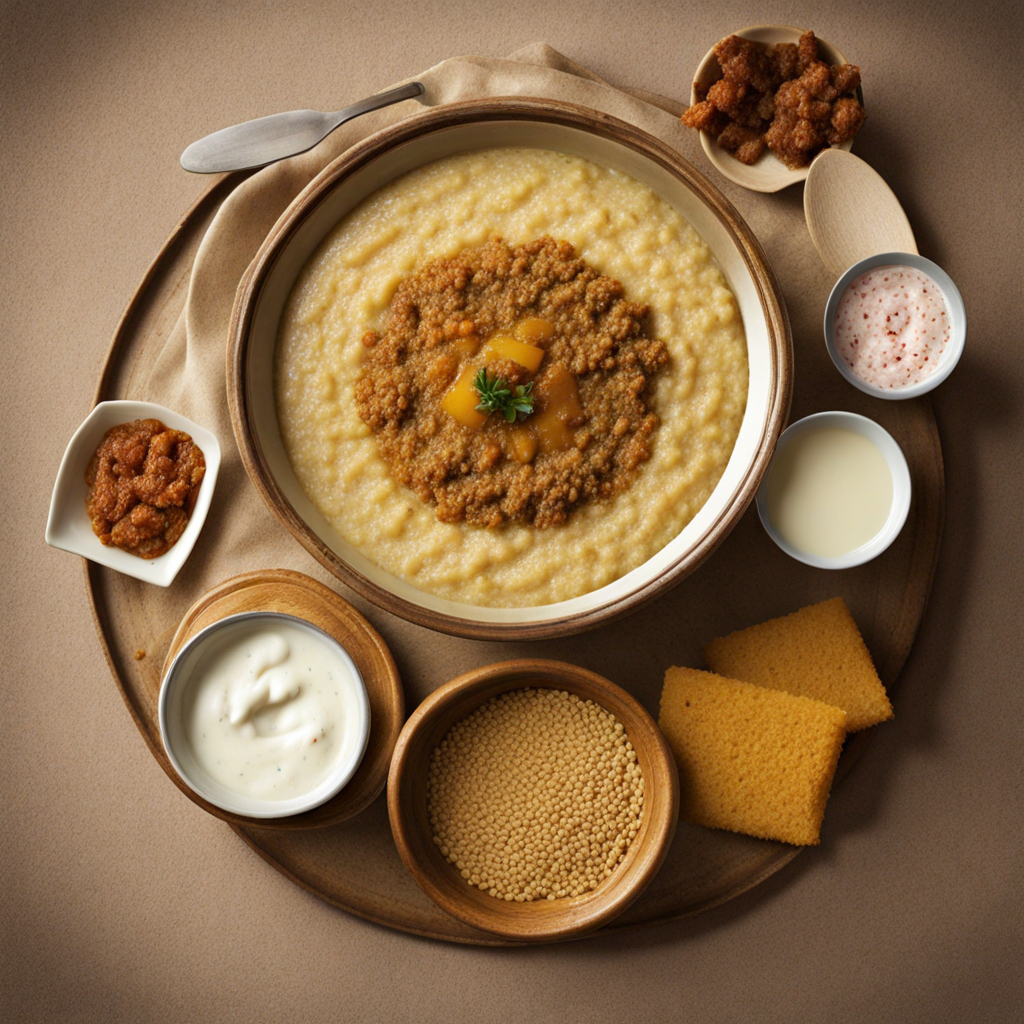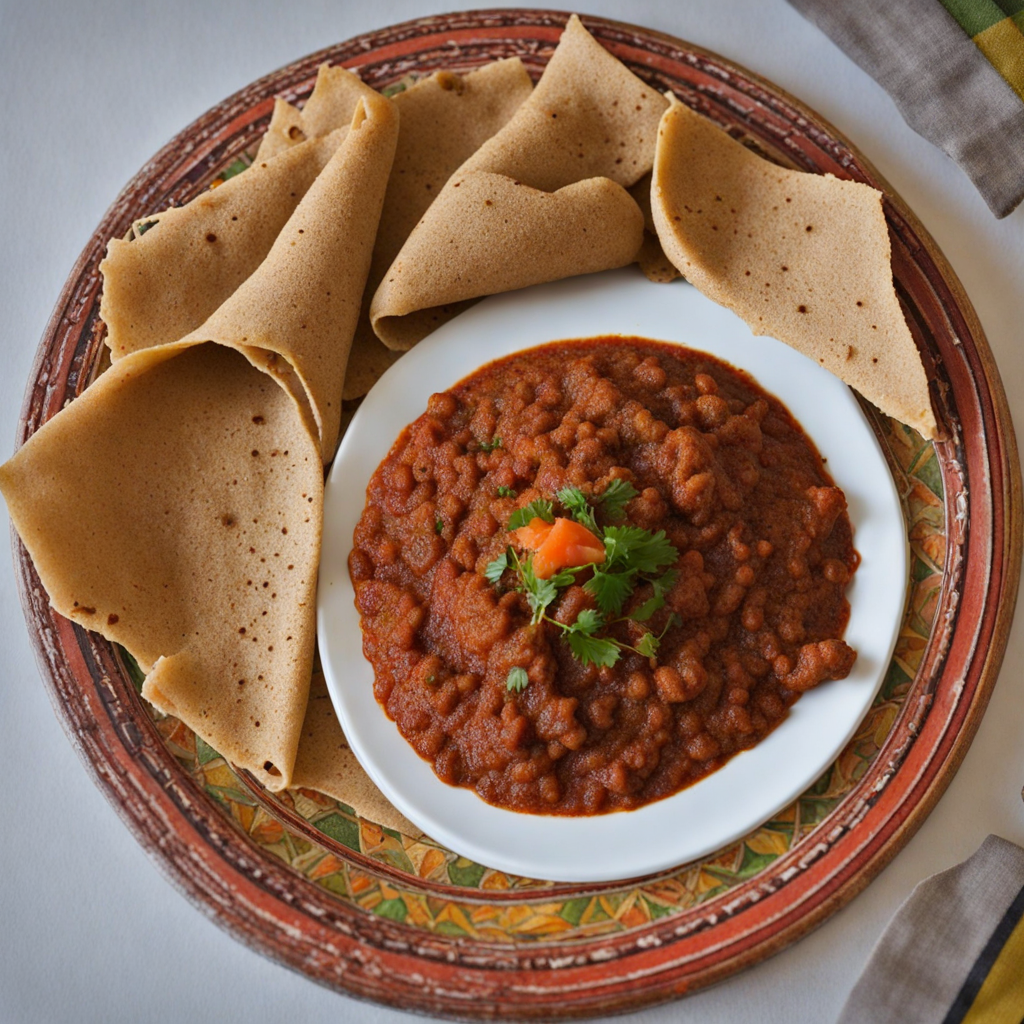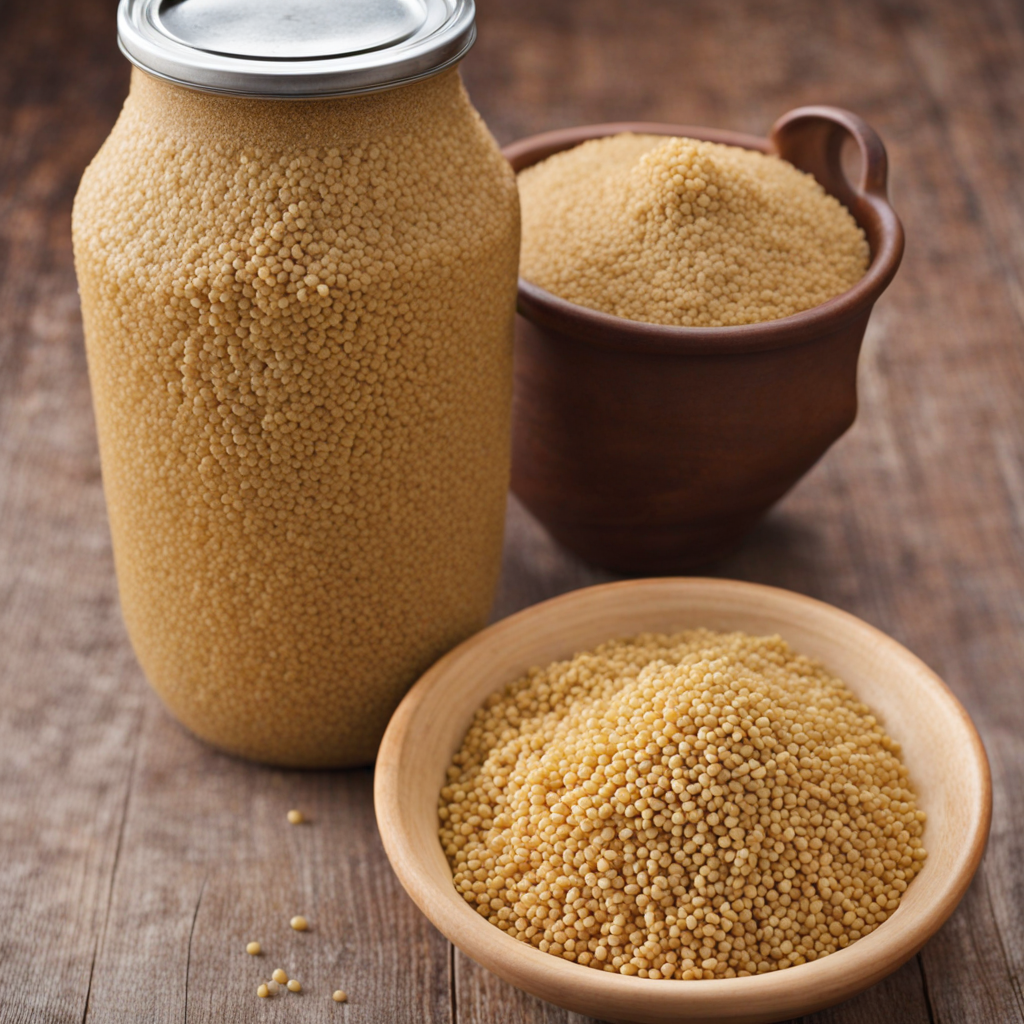Silsi
Silsi is a traditional Eritrean dish that showcases the rich flavors and spices of East African cuisine. It typically consists of a spicy stew made with either chicken, beef, or lamb, which is simmered in a tantalizing blend of berbere—a fiery spice mix that includes chili peppers, garlic, ginger, and various aromatic spices. The slow cooking process allows the meat to absorb the intricate flavors, resulting in a dish that is both hearty and satisfying. The vibrant color of the stew, often a deep red or orange, reflects the warmth of the spices used, inviting you to delve into its bold taste profile. Accompanying Silsi is often injera, a traditional sourdough flatbread made from teff flour. Injera serves as both a utensil and a side, allowing diners to scoop up the stew while providing a tangy contrast to the rich flavors of the Silsi. The texture of the injera is soft and spongy, which perfectly complements the stew, soaking up the juices and spices. The combination of the two creates a delightful balance, where the heat of the Silsi is mellowed by the mild, slightly sour notes of the injera. Eating Silsi is not just about savoring a meal; it’s an experience of community and tradition. Often served on a large communal platter, it encourages sharing and connection among diners. The act of eating with your hands, tearing off pieces of injera to scoop up the Silsi, adds an element of intimacy to the experience. Each bite is an adventure, offering a complex interplay of flavors that can range from spicy and savory to slightly sweet, depending on the ingredients used. Discovering Silsi is a journey into the heart of Eritrean culture, where food is a celebration of heritage and togetherness.
How It Became This Dish
The History and Cultural Significance of ስልሲ (Silsi) in Eritrea #### Origins and Ingredients Silsi, a traditional Eritrean dish, is deeply rooted in the culinary practices of the Horn of Africa, particularly among the Eritrean and Ethiopian peoples. The dish is a type of stew that features a rich blend of spices and ingredients, showcasing the region’s agrarian lifestyle and cultural exchanges. The origins of Silsi can be traced back to the ancient agricultural societies of Eritrea, where staple ingredients such as lentils, chickpeas, and various vegetables were cultivated. At its core, Silsi is primarily made from lentils or chickpeas, offering a hearty and nutritious base. The dish is often flavored with a mix of spices, including berbere—a staple spice blend that encompasses chili peppers, garlic, ginger, and other aromatic ingredients. This vibrant spice mix not only enhances the flavor but also reflects the culinary traditions of the region, which emphasize bold flavors and the use of local herbs and spices. #### Cultural Significance Silsi holds a significant place in Eritrean culture. It is more than just a meal; it is a representation of community, hospitality, and tradition. In Eritrean society, food is integral to social gatherings, religious ceremonies, and family celebrations. Silsi is often served during festive occasions, communal meals, and family gatherings, symbolizing unity and togetherness. The preparation and serving of Silsi can also be seen as an expression of cultural identity. Traditionally, it is served with injera, a sourdough flatbread that acts as both a plate and utensil. The communal aspect of eating Silsi with injera encourages sharing, fostering relationships and reinforcing social bonds. In many Eritrean households, the act of preparing Silsi is a family affair, where generations come together to create this beloved dish, passing down recipes and techniques that have been honed over centuries. #### Development Over Time The history of Silsi is intertwined with the broader historical narrative of Eritrea itself. The region has experienced various cultural influences due to trade routes, colonialism, and migration. Each of these factors has contributed to the evolution of Silsi, allowing it to adapt to changing tastes and available ingredients. In ancient times, the trade routes that crisscrossed the region brought spices and culinary practices from distant lands. As a result, Silsi absorbed diverse influences, leading to variations in its preparation depending on local customs and available resources. For instance, in coastal areas where fish and seafood are abundant, Silsi may incorporate these elements, while in the highlands, it may lean more towards vegetarian ingredients. During the Italian colonization in the late 19th and early 20th centuries, Eritrean cuisine, including Silsi, experienced further transformation. The Italians introduced new cooking techniques and ingredients, such as tomatoes and various herbs. This interaction not only diversified the flavor profile of Silsi but also made it more accessible to a wider audience, as the dish began to be served in cafes and restaurants, allowing it to reach beyond traditional settings. In the post-independence era of Eritrea, which began in 1993, there has been a resurgence of interest in traditional foods, including Silsi. As Eritreans sought to reclaim their cultural identity after years of conflict, traditional dishes became a source of pride and a way to preserve their heritage. Today, Silsi is celebrated not only in homes but also in restaurants, where chefs experiment with the dish while honoring its traditional roots. #### Modern Variations and Global Influence In contemporary Eritrea, Silsi has seen a variety of adaptations and innovations. As globalization has brought new ingredients and culinary techniques, many chefs are reinterpreting Silsi to appeal to a broader audience while maintaining its essence. Some variations may include the addition of modern vegetables or proteins like chicken or beef, catering to evolving dietary preferences. Outside of Eritrea, the dish has gained popularity in the diaspora, particularly in countries with significant Eritrean communities, such as the United States, Canada, and various European nations. Eritrean restaurants often feature Silsi on their menus, introducing it to new audiences and fostering an appreciation for Eritrean cuisine. The dish not only serves as a culinary ambassador but also as a means for Eritreans abroad to connect with their roots and share their culture with others. In addition to its culinary evolution, Silsi has become a symbol of resilience and pride for the Eritrean people. It represents a connection to the land, history, and cultural identity that has endured despite external pressures and changes. As Eritrea continues to develop and modernize, Silsi remains a beloved dish that bridges the gap between tradition and contemporary life. #### Conclusion Silsi is much more than a dish—it is a narrative woven into the fabric of Eritrean life. Its origins reflect the agricultural practices of the region, while its preparation and consumption embody the values of community and tradition. Over time, Silsi has adapted to cultural shifts, historical events, and global influences, all the while remaining a symbol of Eritrean identity. As Eritreans continue to celebrate their culinary heritage, Silsi will undoubtedly play a central role in the story of Eritrean food culture. Whether enjoyed at home, in a bustling restaurant, or during a festive gathering, Silsi is a reminder of the richness of Eritrean history and the importance of preserving and sharing this cherished culinary tradition for generations to come.
You may like
Discover local flavors from Eritrea







